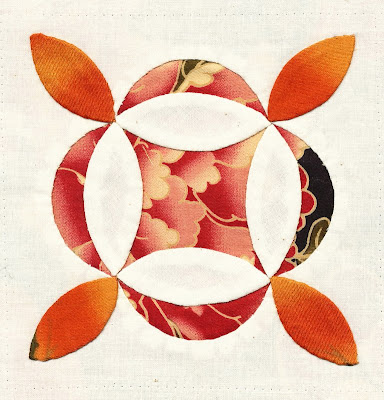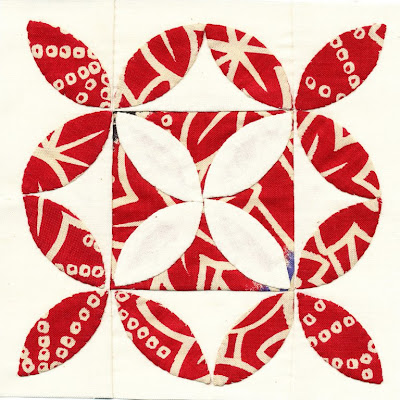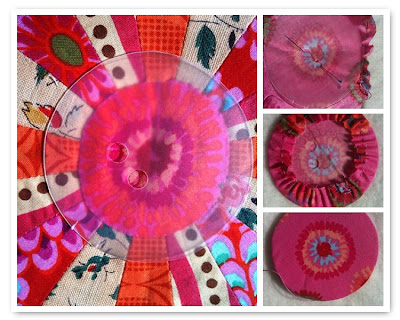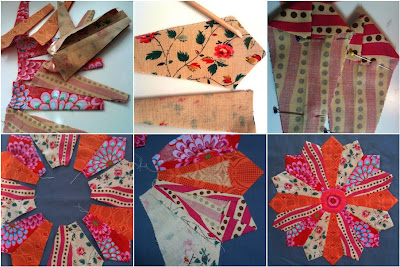This post has been a long time coming. How to break down and describe the process of designing, fussy cutting and sewing a block using Marti Michelle’s Set H.
I first purchased a set of these in a quilt shop but felt too intimidated to use them. Then I bought the accompanying book but it still wasn't making much sense. It wasn’t till I attended a class with Catherine Butterworth that it all gelled and made sense, she’s a wonderful teacher. Now I’m enjoying arranging the shapes with different prints and colours to create unique blocks and looking forward to creating more quilts using some of the other template sets.
Prior to this the only way I’ve tackled hexagons and inset seams was using English Paper Piecing. Now that I’ve used the Perfect Patchwork templates it’ll be pretty hard to go back to that method for a large quilt. Sewing hexagons and inset “y seams” with your sewing machine is much faster and almost fool proof. The template set comes with 3 acrylic templates to create 11 shapes.
By taking the focus away from the construction I’ve found I am playing more with the designs and having lots of fun with all the different tessellations that fit inside the finished 6” sided hexagon. (Marti Michelle templates are measured by the length of a hexagon’s side)
So how do you start?
Firstly, pick some fabric you can play with. There are lots of wonderful prints that start to take on a life of their own once you’re armed with a tessellating shape and Marti Michelle’s Magic Mirrors.
Make a cardboard window of the finished size of your diamond by using the markings on the acrylic template. Move the window over your fabric and use the “magic mirrors” to help you find a placement that works.
Once you’ve selected the area you want to use, mark the corners so you can align the acrylic template and cut the precise shape. Cut using a small or medium rotary cutter, make sure you clip the engineered corners off. They really make a difference when you are sewing the seams together!
Use this shape to help you with placing the other 5 diamonds.
A warning: make sure you’ve got enough of the fabric to yield 6 repeats, I’ve been caught out more than once! Generally speaking fabric repeats every 24” so you will need 1.5 yards of fabric to get 6 exact large diamond pieces across the length of the fabric. Be aware that you will need a lot more fabric than if you are cutting shapes from a strip.
To piece the diamonds into the star shape you will need to mark the starting and stopping points of the seams on your diamond shapes. Mark them on the back of your diamonds with a pencil. I’ve found chalk rubs off and makes piecing the blocks together difficult.
Align two diamond shapes together, face to face.
Starting at the first dot, tie a knot (or make a couple of “zero stitches”) and stitch along the 1/4” seam till you approach the end dot. Tie off and cut the thread. Repeat with the other diamonds. Join the first and the last diamonds together in exactly the same way. Make sure you keep the seam allowances out of the way.
Start with simple diamond shapes till you’ve mastered the cutting and piecing techniques. Press the seams to face one way and “swirl” the centre seam to reduce the bulk at the middle.
By using 6 more diamonds, we can fill in the spaces between out star “arms” to make a hexagon.
That’s all for today, will put some more information together to post here soon… Please let me know if you have any questions.
have fun xx




































 We also discuss colour and value and their important role in quilt design. Keeping your colour choices to the colours found in your
We also discuss colour and value and their important role in quilt design. Keeping your colour choices to the colours found in your  A quick introduction to the common tools that quilter's use: needles, fine glass head pins, 100% cotton fabrics and cotton thread. Cutting patchwork pieces with scissors is very time consuming, a rotary cutting system can really speed things up. You will need a rotary cutter, a self healing cutting mat and a thick acrylic ruler. Be careful with the rotary cutter, keep it out of reach of children and always engage the safety latch.
A quick introduction to the common tools that quilter's use: needles, fine glass head pins, 100% cotton fabrics and cotton thread. Cutting patchwork pieces with scissors is very time consuming, a rotary cutting system can really speed things up. You will need a rotary cutter, a self healing cutting mat and a thick acrylic ruler. Be careful with the rotary cutter, keep it out of reach of children and always engage the safety latch.
